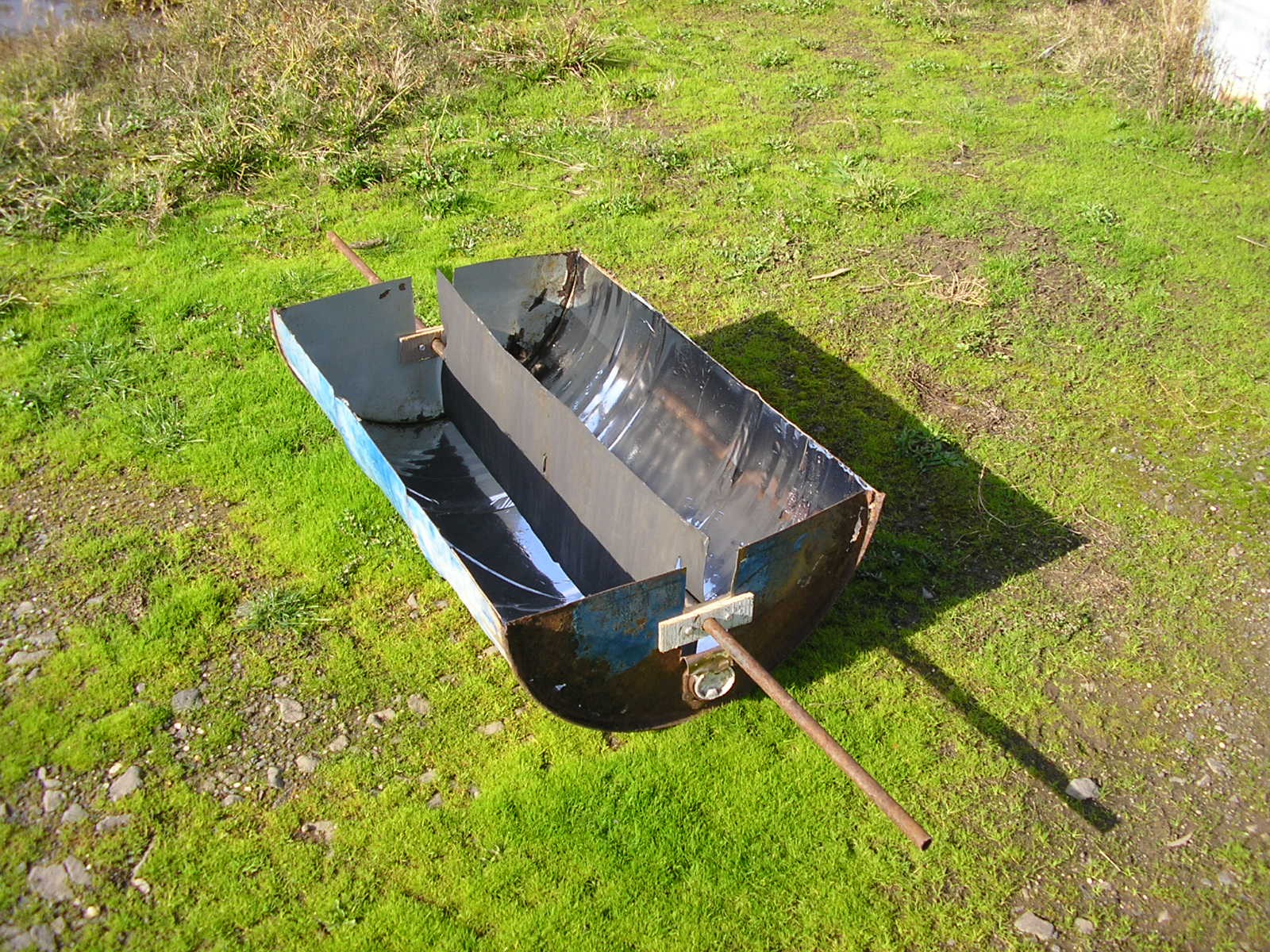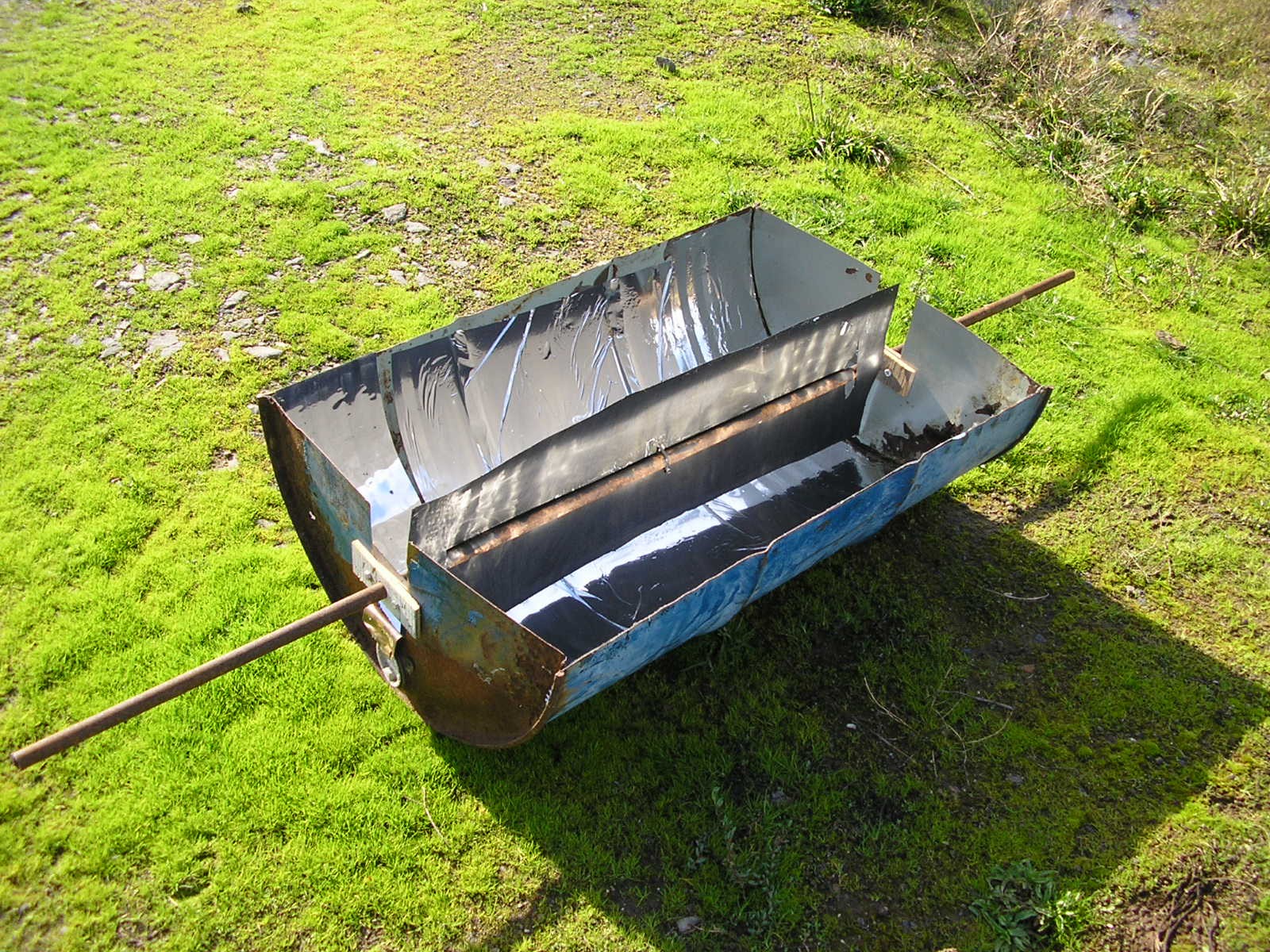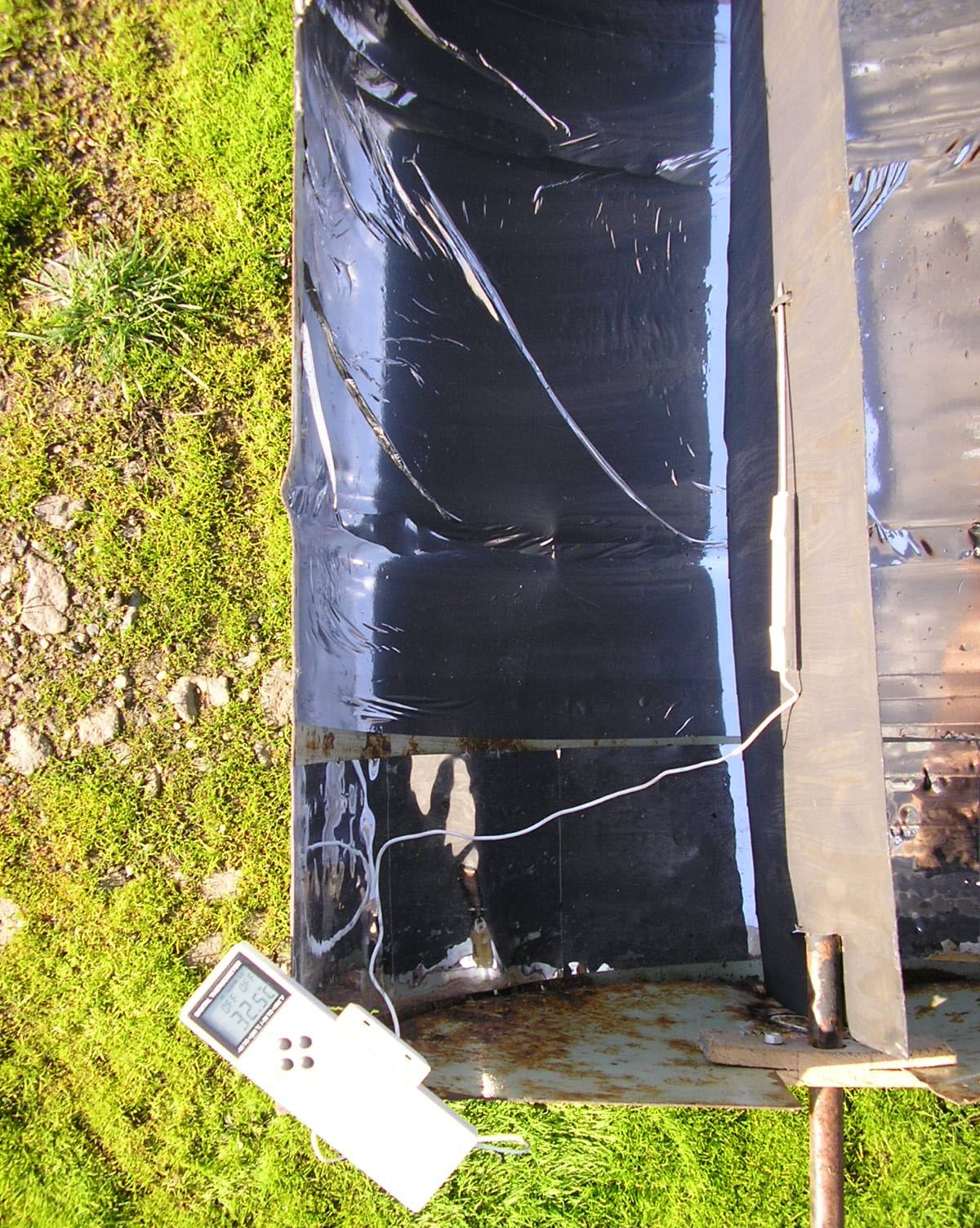I finally caught the sun poking out from the clouds last week (I'm getting a bit slow with these updates) and got the chance to test the new collector panel. The increased surface area 'collecting' both direct and reflected light is obvious.


From an ambient temp. of 13degC in the shade, the collector peaked at 32.5degC (19degC rise) which is... not as good as just the pipe on its own. Clearly the heat dissipation to air is too great, even with the illuminated area far greater than with just the pipe on its own. The cold breeze blowing wouldn't have helped either.

I'm not quite ready to give up on the black-rectangle collector approach yet though. Sealing everything up by putting a piece of clear perspex (polycarbonate) over the top should prevent air circulation and therefore reduce the heatsinking effect. This is suggested in some regular parabolic solar concentrator designs anyway. The perspex will absorb some light as well, and looking at websites of distributors and DIY PV solar panel constructors suggests roughly 90% transmission of light through thin perspex. Glass would be a little better, and wouldn't discolour over time, but for testing perspex will be much easier to work with and close enough to get an idea of whether it will be worthwhile.
Of course I could still switch to what everyone else does and use a parabolic reflector, but the temptation of easier manufacture and no need for a solar-tracking system still draws me to this design.
Discussions
Become a Hackaday.io Member
Create an account to leave a comment. Already have an account? Log In.